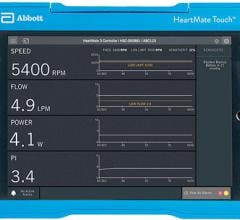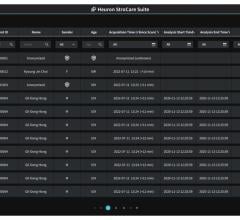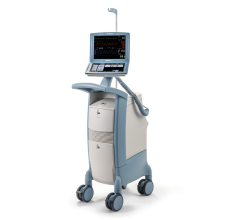
September 7, 2023 — Boston Scientific Corporation announced it has received U.S. Food and Drug Administration approval for the latest-generation WATCHMAN FLX ProLeft Atrial Appendage Closure (LAAC) Device. Designed to further advance the procedural performance and safety of the WATCHMAN technology, which is indicated to reduce stroke risk in patients with non-valvular atrial fibrillation (NVAF) who need an alternative to oral anticoagulation therapy, the device now features a polymer coating, visualization markers and a broader size matrix to treat a wider range of patients.
The WATCHMAN FLX Pro device is built upon the proven safety and procedural performance of the WATCHMAN FLX LAACdevice, which was approved in July 2020 and has been used in nearly 190,000 of the more than 300,000 WATCHMAN procedures successfully completed to date globally. The latest WATCHMAN FLX Pro device is enhanced with a coating designed to reduce device-related thrombus and enable faster, controlled healing and endothelization of the device surface. In addition, newly added visualization markers are intended to enhance device placement for optimal sealing around the LAA. This device is also available in a new 40mm size option, which will enable physicians to treat a broader range of anatomies with the WATCHMAN technology.
"We are pleased to introduce U.S. clinicians to our newest LAAC technology, which is designed to enhance post-procedural healing, improve the precision of WATCHMAN FLX Pro implants, and expand the size range of treatable appendages," said Joe Fitzgerald, group president, Cardiology, Boston Scientific. "These enhancements to our WATCHMAN FLX technology will enable efficiency during implant procedures and allow physicians to optimize treatment for their patients."
Preclinical research for the new technology has shown positive results for faster, more controlled healing around the device surface. Data across several of these preclinical studies demonstrated that the polymer coating provided an 86% reduction in inflammation three days following the procedure, a 70% reduction of thrombus at 14 days and a 50% increase in endothelial tissue coverage 45 days post procedure.1
"There is a rich history of safe use and low thrombosis rates in cardiovascular devices that utilize this thromboresistant polymer coating, and we have adapted that model to provide a more streamlined healing process that begins immediately following LAAC," said Dr. Kenneth Stein, M.D., senior vice president and global chief medical officer, Boston Scientific. "We believe this evolution of the WATCHMAN device also gives promise for a future with less thrombosis risk, which may eventually enable a simpler post-implant drug regimen for patients."
The WATCHMAN FLX Pro device maintains key characteristics of the WATCHMAN FLX device, including the fully rounded design that enables physicians to safely enter, and maneuver within, the left atrial appendage. It can also be fully recaptured, repositioned and redeployed for precise placement, and the frame design allows for optimal device engagement with the tissue for long-term stability and a faster, more complete seal.
The WATCHMAN FLX Pro device is currently being studied in the WATCHMAN FLX Pro CT study, a single-center premarket study using multiple imaging modalities to assess post-procedural device tissue coverage and the relationship, if any, to clinical outcomes. It will also be further evaluated in the post-market HEAL-LAA study, which will commence over the coming weeks and follow outcomes from approximately 1,000 patients with NVAF implanted with the technology at 60 sites in the U.S.
For more information: www.watchman.com/flxpro
Related content:
Real-world outcomes from the EU-PORIA registry of the FARAPULSE Pulsed Field Ablation (PFA) System
Late-Breaking Study Results Reinforce Positive Real-World Outcomes with the WATCHMAN FLX LAAC Device
PINNACLE FLX Study of New Watchman FLX LAA Occluder Meets Safety and Efficacy Endpoints
First Comparison of Amulet and Watchman FLX LAA Closure Devices Found Similar Outcomes
Pulsed Field Ablation Successfully Treats Atrial Fibrillation
Pulsed AF Trial Shows Pulsed Field Ablation May be Safer Than Tranditional RF Ablations


 November 07, 2024
November 07, 2024 








